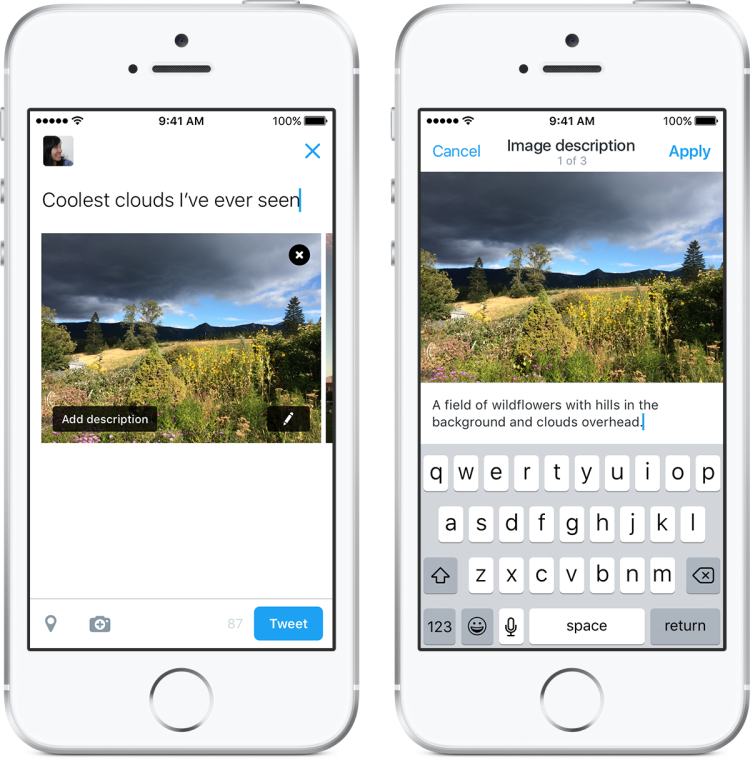Want smarter insights in your inbox? Sign up for our weekly newsletters to get only what matters to enterprise AI, data, and security leaders. Subscribe Now
Twitter is taking a step toward making its service more accessible to visually impaired users. The company is launching support for alternative texts to accompany images across its iOS and Android apps, which means that any image descriptions will be available to those using screen readers. This feature can be used by not only the service’s 320 million monthly active users, but also by publishers and developers — Twitter has updated its REST API and Twitter Cards for the occasion.
This release is also a sign that Twitter is looking to make peace with the developer community. At last year’s Flight conference, CEO Jack Dorsey publicly apologized for the strained relationship between his company and developers, inviting them to submit suggestions and feedback using the hashtag #HelloWorld. Twitter said that supporting alt images was the fourth most-requested feature.
When you enable the feature through Twitter’s accessibility settings, the thumbnail of any image you tweet will contain an “add description” button that, when tapped, will open up a dialogue box. Here you can include a description of up to 420 characters.
In 2006, when Twitter was a text-only service, its “content was easily accessible to people who are visually impaired,” the company said in a blog post, adding, “Over the years, we’ve extended the platform to support a range of media, but we haven’t provided our users and developers with the tools to provide alternative text to images in tweets.”
To emphasize why this update is important to developers, Twitter explained that the community has tried to solve this problem before. In 2014, a workaround was created to allow EasyChirp users to post short and long descriptions of images. Then there was the Alt Text Bot, which allowed people to mention @alt_text_bot in a tweet or retweet with an attached image to receive a reply containing a text description.
Now there’s official support for this accessibility standard.
It’s somewhat difficult to believe that the average user would be willing to spend the time to add descriptions to images they include, but this certainly has an appeal to developers and publishers. Alt text isn’t a new thing in online technology — it’s been a standard for a while, from back when building websites was the thing to do. Its inclusion on tweets will probably be beneficial to the likes of the AP, BBC, Sky News, and the New York Times — all of which are launch partners — as it furthers the impact of their reach and readership.
If a publisher tweets out an article with an image containing alt text meta data, the image will retain the description when retweeted,. However, should someone tweet out a similar image, it will not contain the same meta data as the original.
In addition to the accessibility gains, another potential benefit of including alt text in images is that it should make it easier for search engines to identify specific tweets. Image content is one of the things that Google, Yahoo, and Bing may look at in searches, and the addition of this feature could help with that. This could be useful not only with external search engines, but within Twitter’s search field as well, or through API partners.
The option of adding alt text to images is only available on Twitter’s iOS and Android apps, but users on the Web will still be able to read the text using their favorite application. TweetDeck has not been mentioned.


